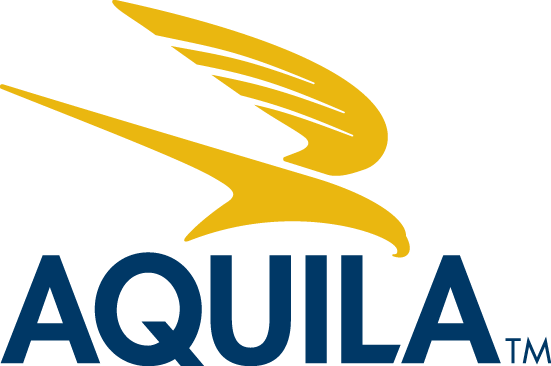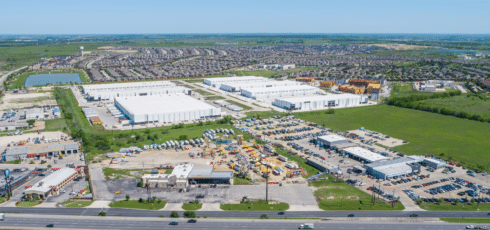When considering subleasing your office or commercial space, there are likely several questions running through your head.
There’s a lot to consider: Will you find the right subtenant? How long will your space be on the market? And most importantly: What costs or fees will I incur if I decided to put my space on the market?
From our experience helping tenants sublease their space, we know that the cost to sublease is an important factor to understand from the get-go and to factor into your decision-making process.
In this article, we’ll explain what expenses you should plan for when you decide to sublease your space, including:
- Broker fees
- Legal fees
- Marketing expenses
- Moving costs
- Construction costs
- Sublease consent fees
Costs and Fees Associated with Subleasing Your Commercial Space
Below we’ll describe the most common fees and expenses that you may encounter when you sublease your space. Remember, not all of these fees will apply in every situation, but it’s crucial to be aware of them and understand if you should factor them into your sublease expenses.
Also remember, these are a description of fees or cost of services that are associated with the subleasing process.
Be aware, while not an additional cost, you will still be responsible for your rental obligation while you market your space for sublease. In many cases, your subtenant will only take on a portion of your rental expense, meaning you will still be responsible for the remainder of your rent obligation for the duration of your lease.
This article does not account for any expenses associated with signing a new lease if you’re relocating your office to a new location. These should be accounted for in addition to your subleasing expenses.
Read Next: What Are the All-In Costs of Relocating My Office?
Brokerage Fees
When you engage a commercial real estate broker to represent your sublease, you are not responsible for any up-front costs.
Real estate brokers are paid when they get their job done.
That means, they make a commission on the negotiated rental rate after the lease is signed.
As the sublandlord (or sublessor), it is standard in the market that you are responsible for both your broker(s)’ commission and the subtenant’s (sublessee) broker commission.
In Austin, it is standard for the landlord (or, in this case, sublandlord) to pay a 6% commission based on the gross rent to be collected over the life of the sublease. Your broker (the sublessor’s broker) typically takes 2% of that commission, and the subtenant’s broker will be due the remaining 4%.
Typical Fee on a Sublease = 6% x (Average Annual Gross Rent* x Lease Term)
*Average Annual Gross Rent = (Base Rent/SF + Operating Expenses/SF) x Size
For example, in a transaction where the subtenant agrees to pay $20 per square foot NNN with $10 per square foot op/ex for a 5,000-square-foot space with a two-year term, you would be responsible for paying $18,000 in commission.
[($20/SF NNN + $10/SF op/ex) x 5,000 SF] x 2 years = $300,000 Total Gross Rent
$300,000 x 6% Commission = $18,000
Of that total commission, $6,000 would go to your broker and $12,000 would go to the subtenant’s broker.
In some cases, your broker may source a subtenant who is not represented by a broker. In this case, it is standard for your broker to receive a 4% commission payment, saving you 2% in commission fees. This should be spelled out specifically in your listing agreement.
When considering this fee, remember, a tenant representation broker adds value in many ways, including:
- providing first-class marketing materials for your space
- getting your sublease in front of as many potential tenants as possible
- leveraging their market knowledge and experience to negotiate the best terms for you
- guiding you through the complex landlord consent process
Read Next: How to Sublease Your Office Space: An A-to-Z Guide to the Subleasing Process
Legal Fees
Your broker will help you understand and navigate the subleasing rights in your existing lease with your landlord as well as lead you through the sublease negotiation process with your new subtenant.
However, a broker should never replace your legal counsel. We always advise our clients to have an attorney review any contracts before agreeing to them.
The more back-and-forth negotiations required or the more complex the terms of the lease or sublease, the more hours you’re likely to accumulate with your legal team.
Marketing Expenses
To gain the attention of potential tenants and their brokers, you should at least have the basic marketing materials for your office or industrial space, including:
- A sublease flyer that features images of the space, a list of property and suite-specific features and highlights, details including size, term, date available and rate, leasing contact information, a location map, etc.
- A listing page on the brokerage firm’s website, making your space easily accessible online and via search
- Broker emails, a regular distribution promoting your property to the firm’s database of local brokers
- A listing on commercial real estate sites like Costar and LoopNet; these sites are a broker’s first stop when searching for spaces for their clients
- A spot in the firm’s available inventory report which is distributed on a monthly basis to the brokerage community
These items should be provided at a minimum by any brokerage firm that you engage.
However, there are many additional marketing tools that most successful brokerage shops should be able to provide. These include:
- Virtual tours that allow brokers and tenants to tour the space from their computer
- Property marketing videos that tell the story and capture the attention of your prospective tenants
- Professional photography to make your property stand out from the pack
Reputable brokerage firms should provide these additional marketing materials to you at no cost, but that’s not always the case. It’s important to ask for a proposed marketing budget when considering brokers to understand what costs they may ask you to take on and what the firm will provide as a part of their services.
Moving Costs
If you plan to relocate out of your current facility and sublet the entire space, you’ll need to account for moving fees.
For Austin offices, you can expect to pay approximately $1.50 to $2.00 per square foot (subject to the specifics of your operation) to move based on the size of your current space. For a 10,000-square-foot office, you should budget between $10,000 and $15,000 for your moving expenses.
The cost to move for industrial tenants is much more wide-ranging and depends entirely on the type of facility you operate and the amount of infrastructure that needs to be relocated.
Construction Costs
On the other hand, if you only plan to sublease a portion of your space and intend to continue to occupy the remaining space, you may need to account for construction costs.
Unless you and your subtenant agree to share the space openly, or the subtenant is taking over the entire premises, you may need to demise the space to create two private offices or facilities.
This may require adding a wall (or walls) or removing an internal stairwell.
As the sublandlord, these construction costs will be your responsibility. Typically these will need to be paid out of pocket unless you have unused TI allowance remaining from your landlord.
Read Next: Cost to Build-Out Office Space: How to Plan and Budget
Sublease Consent Fees
Your broker should help you analyze your existing lease and understand your specific sublease rights and what, if any, sublease consent restrictions your landlord may be entitled to.
One of the most common items you will find in your lease is a sublease consent fee. This is a predetermined fee that you have to pay your landlord in exchange for their consent to sublease your space.
In Austin, these typically range between $500 and $5,000.
These are the typical costs associated with subleasing an office or industrial space. To understand more about your specific project and budget, simply request a consultation today and someone will be in touch shortly. Any of our qualified tenant representation experts would be happy to help.
Or to continue learning about the subleasing process, keep reading these helpful articles:
- What Is a Commercial Sublease Agreement, and Who Should Consider Subleasing?
- 5 Key Questions to Ask Before Hiring a Sublease Broker
- How to Sublease Your Warehouse or Manufacturing Space
- Why Use a Full-Service Commercial Real Estate Firm to Successfully Sublease Your Space?
- 5 Reasons Your Sublease May Not Be Moving (And How to Move Forward)
To see how AQUILA has successfully helped companies just like you sublease their office space, check out these recent success stories:
- Zello’s Office Solution: Selling, Leasing, and Subleasing on Sixth Street
- Subleasing for StrongBox: Crafting a Creative Solution at Stonelake 6













